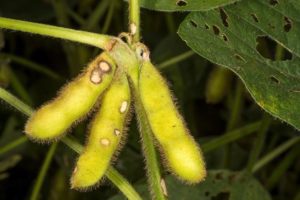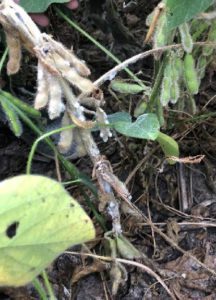By Jerry Hartsock & Dakota Miller
Cutting Edge Consulting & Research Services
NOW is the time to evaluate ear development as your true report card for planting conditions, planting standards, and seed quality. Returning to a Net Effective Plant Stand (NEPS) evaluation location that was done early in the season is an excellent way to see how things progressed OR digressed later in the season. It is also vital to do VERY HONEST full ear counts and NOT just plant counts to know what the yield potential is in each field. These counts will help with yield estimates, evaluation of the planting process, and evaluation of the total plan that was executed this year.
Lorsban (Chlorpyrifos) has been pulled from the market pending registration review in corn for non-food market uses. Chlorpyrifos was used in adulticide control of corn rootworm beetles and for spider mite control in soybeans. This basically leaves one product for spider mite control in soybeans which is Cygon (Dimethoate).
Monitor soybean fields for northern and western corn rootworm beetles as they will most likely lay their eggs in the soil where they feed last. As corn matures, rootworm beetles can migrate (and are doing so) to soybean fields that are still pollinating and have a more palatable food source. Also be checking for pod feeders like grasshoppers, bean leaf beetles, stink bugs, etc.
Corn rootworm management for the 2022 crop will need to take into consideration the populations/egg-laying that occurred in corn and soybean fields. DO NOT UNDERESTIMATE these populations or it will be very costly if significant rootworm larvae feeding occurs. Trait use (Qrome®) with at-plant insecticide, being either Bifenthrin (Capture, Nirvana, etc) or elite granulars (Aztec, Force) performed the best, especially in heavy infestations.
Keep a close vigil on foliar disease progression on corn especially those that did not receive an R1 application of fungicide. Southern Rust is prevalent in some states and southern corn belt locations. Also, evaluate the disease control and yield differences from R1 applications of the various corn fungicide products. Cannibalism of lower stalks needs to be monitored as well under low Potassium, Nitrogen, and Sulfur situations. Weak shanks are still a serious concern in early planted corn and situations that had nutrient deficiencies.
Carefully evaluate soybeans for disease pressure and progression. White mold as a whole has not been widespread, but there are areas and varieties showing white mold that NEED to be noted for next year. This disease is recognizable with sporadic dead plants throughout the field, and when you pull back rows and look in the canopy the signature white fuzz on the stem and pods are clear symptoms of white mold. Sudden Death Syndrome (SDS) is the other disease that varieties and farms need to be evaluated. As we have mentioned all season, we are looking at both Ilevo and Saltro seed treatments for their effects on SDS control AND yield.
Looking at and evaluating your current nitrogen and sulfur programs is IMPERATIVE to pushing yields and making improvements in the future. Every year is key to be evaluating nitrogen/sulfur programs with the losses that can happen throughout the year. With mid and late-season losses or availability issues, it is evident who executed an efficient and effective nitrogen/sulfur management program. With a proper program, there is little firing up the leaves and less yellowing with nitrogen shortages/losses. These are the farms that had sufficient nitrogen and sulfur to last them through grain fill to take yields to the next level and maintain better structure.

